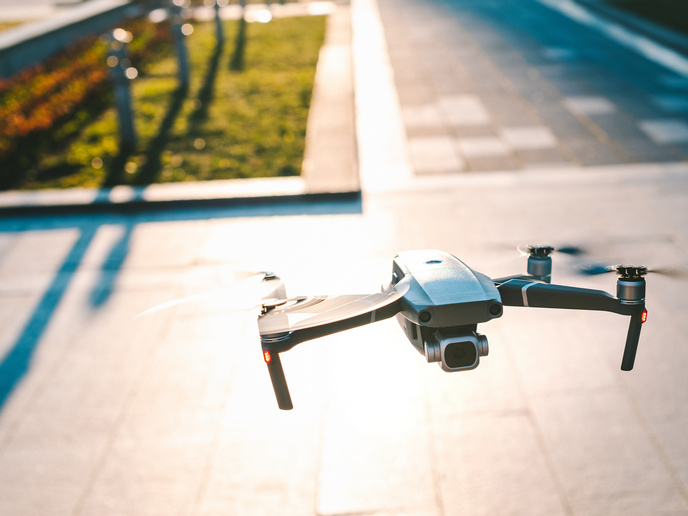Safely integrating drones into congested urban airspace requires a careful balance between traffic demand and capacity.
Uncrewed aerial vehicles (UAVs) are on the cusp of disrupting urban mobility as we know it. But before we can catch a flying taxi to the airport or get our latest online purchase delivered directly to our doorstep via a cargo drone, they need to be safely integrated into the urban airspace. Enter the DACUS project, which was funded within the framework of the SESAR Joint Undertaking, a public-private partnership set up to modernise Europe’s air traffic management system. “For safe and efficient daily operations, future drone ecosystems need mechanisms to manage the number of UAVs that can safely operate, limiting the impact they have on local populations,” says Ángel Martínez Mateo, R&D engineer at the ATM R&D + Innovation Reference Centre (CRIDA) (website in Spanish), the DACUS project’s coordinating partner.
Balancing demand and capacity
At the heart of the project is a demand and capacity balancing (DCB) process for drone traffic management in urban environments. “The balancing of traffic demand and airspace capacities is an essential tool for ensuring safe and efficient traffic flows, especially over cities, and one that demands an informed decision-making process,” explains Martínez. The problem is that, unlike traditional aviation, the UAV sector lacks an observable system of operations to learn from. Furthermore, a high volume of traffic in low-level airspace can increase air and ground risks, affect public acceptance and impact the surrounding environment. What this all means for U-space, Europe’s uncrewed aircraft traffic management (UTM) solution, is that demand and capacity balancing must consider a diverse set of factors when selecting the more efficient air space configuration and minimising the application of constraining measures. “This is why DACUS looked to develop a consistent balancing process – from the strategic to the tactical phase – that takes into account the uncertainty of planned UAV operations, as well as its eventual integration into a service-based U-space concept that envisions a UAV ecosystem with no human controller,” adds Martínez.
A demand and capacity balancing concept of operation
One of the main outcomes of the project is the first DCB concept of operation for drones. In addition to providing a step-by-step overview of DCB processes, the concept covers the dynamic capacity management (DCM) service – essential to maintaining the right DCB even within the highly dynamic and multifaceted nature of UAV operations. “The DCM service is one of the most complex U-space services due to the high quantity of data to process and the direct impact it has on drone operations,” notes Martínez. “That’s why we worked to reduce this complexity and define a consistent sequence of processes.” For DACUS, this meant determining the ‘time ahead’ when effective decisions to balance demand and capacity could be taken, reducing the impact on UAV missions as much as possible.
Supporting U-space decision-making
These outputs, along with a new performance framework developed by the project to support decision-making in U-space, all help bring urban air mobility one step closer to becoming a safe and sustainable reality. “While important, our research just scratches the surface of what is needed to ensure safe drone operations over cities,” concludes Martínez. “Needless to say, there is much more research and work that needs to be done.” Some of that research will happen in the SPATIO project, part of the SESAR Joint Undertaking’s Digital European Sky research and innovation programme. Building on DACUS’ results, the project will consistently integrate DCB with UAV spacing solutions, including strategic and tactical conflict resolution.
(Source: Cordis)

